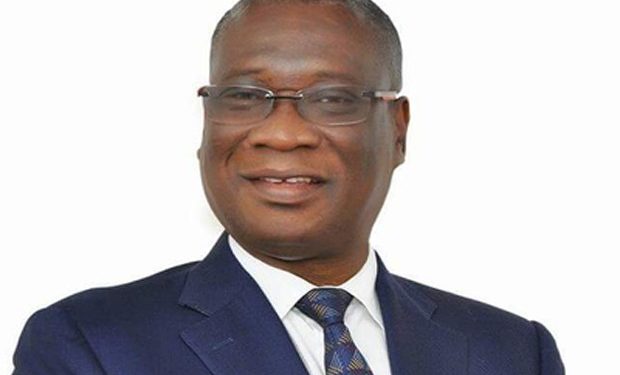The Chief Executive Officer (CEO) of the Ghana National Petroleum Corporation (GNPC), Dr. Kofi Koduah Sarpong, continues to push his luck by courting support for the questionable acquisition of Aker Energy’s stakes in the Deepwater Tano Cape Three Points (DWT/CTP) and South Deepwater Tano (SDWT) blocks offshore Ghana.
He had claimed that, the Italian energy giant was leaving Ghana, but this has turned out to be untrue as Eni is not going anywhere.
Rather the company plans to make more investment here in Ghana the same way it is doing in Côte d’Ivoire. They insisted that his claim was false.
In his latest attempt to court their support, Dr. Sarpong and his team, met selected Civil Society Organization (CSOs), alongside pro-government media and students of University of Ghana to further the government agenda.
Experts have observed that what he is failing to mention to the CSOs and the others is that globally, and especially in Ghana, majors are not the only key players in exploration.
Kosmos Energy, Tullow and Anadarko, the trailblazers in Ghana’s major field, are all independents.
Some top tier companies may be shifting focus, however, mergers and acquisitions (M&A) activity in the oil and gas sector is still boisterous for quality assets. In fact one needs not look far for evidence of this. Kosmos Energy right here has just acquired Anadarko’s stakes in Ghana’s Jubilee and TEN fields.
It is surprising that Dr. Sarpong and his team, would include Eni among his list of “majors shifting away from oil and gas,” since facts available to them make it clear that the Italian oil giant ‘ain’t going nowhere,’ as the Americans would put it. Eni, the Sankofa-GyeNyame field operator, is bent on developing their recent Ghana Block 4 discovery and also negotiating for another block in Ghana, to increase their Ghana assets to three.
It is therefore a lie for anybody, especially Dr. Sarpong, with the facts available to him to suggest that Eni was shifting away from oil and gas in the sub-region.
Again, right across Ghana’s western border, the President of Côte d’Ivoire Alassane Ouattara and Eni CEO Claudio Descalzi met at the beginning of this month to discuss the progress of Eni’s activities in the country, following the giant offshore discovery of Baleine 1-X.
When contacted on GNPC’s claim that the company plans to exit West Africa, Eni stated that its decarbonisation strategy is a public document and nowhere does it state it wants to exit or create a subsidiary to manage its assets.
“We are an established E&P company with technology and record. We have no plans to downplay that even as we push for net zero”, a source at Eni told The Herald.
Indeed, a release by Eni on October 2, said Eni CEO and President Ouattara discussed Baleine’s appraisal and fast-track development plans. This is information that must be available to the GNPC boss and his team, as their roles require they are abreast with developments in the sub-region as well..
“Baleine’s potential is estimated in excess of 2 billion barrels of oil in place and about 2.4 trillion cubic feet (TCF) of associated gas. Its significant gas volumes will contribute to power generation in Côte d’Ivoire, strengthening the country’s role as a regional energy hub,” the release stated.
The negotiations also covered critical areas for knowledge and skills transfer to ensure value retention by the Ivorian resource owners, including a collaboration between Eni Corporate University (ECU) and Ecole Supérieure du Pétrole et de l’Energie to develop competencies and human capital.
These clear examples of practical steps towards capacity building are conspicuously missing from ongoing discussions around the operatorship aspiration by GNPC.
Baleine-1x is the first operated exploration well drilled by Eni in Côte d’Ivoire in the CI-101 block, with the Ivorian national oil company (NOC) Petroci Holding. In addition to the CI-101 block, Eni owns a stake in four other blocks in the Ivorian deepwater: CI-205, CI-501, CI-504 and CI-802, all with the same partner Petroci Holding.
In the case of British Petroleum (BP), it has committed to transitioning from an oil and gas company to an energy company by 2050, but targeted reducing oil and gas production by up to 40% by 2030.
CEO Bernard Looney has made it clear in a webcast Q and A session on presenting BP’s first quarter report that, “the key thing going forward around divestments is we are not in a hurry. We are just not in a rush.”
Critical questions remain unanswered
In his presentation to CSOs, Dr. Sarpong states 40,000 bopd as projected production by 2024 from Pecan Phase 1A, 40,000 bopd by 2027 from Pecan 1B, 60, 000 bopd by 2027 from Nyankom and 60,000 bopd from Pecan Phase 2 by 2030.
Industry watchers believe that the projection of 40,000 bopd in 2024 is unimpressive, while the other additions to grow production to 200,000 are suspiciously unsustainable.
Reserved volumes are not conjured. Reserves certification or audit is carried out by globally recognised entities like DeGolyer, MacNaughton, Gaffney Kline, and Ryder Scott. Therefore for us the critical, yet unanswered questions remain:
How were the contingent resources of 717 million barrels confirmed?
How were “Substantial prospects in the two blocks, especially SDWT”, arrived at?
Can Dr. Sarpong and his team produce the technical audit or certification from a reputable entity on the above? When were the valuations carried out?
The Herald, had earlier reported on surreptitious lobbying by Mr Sarpong and his agents, of some key CSO leaders, especially in oil and gas and government policy sectors, ahead of presenting the proposal to Parliament, either to buy their support or silence their opposition.










Discussion about this post